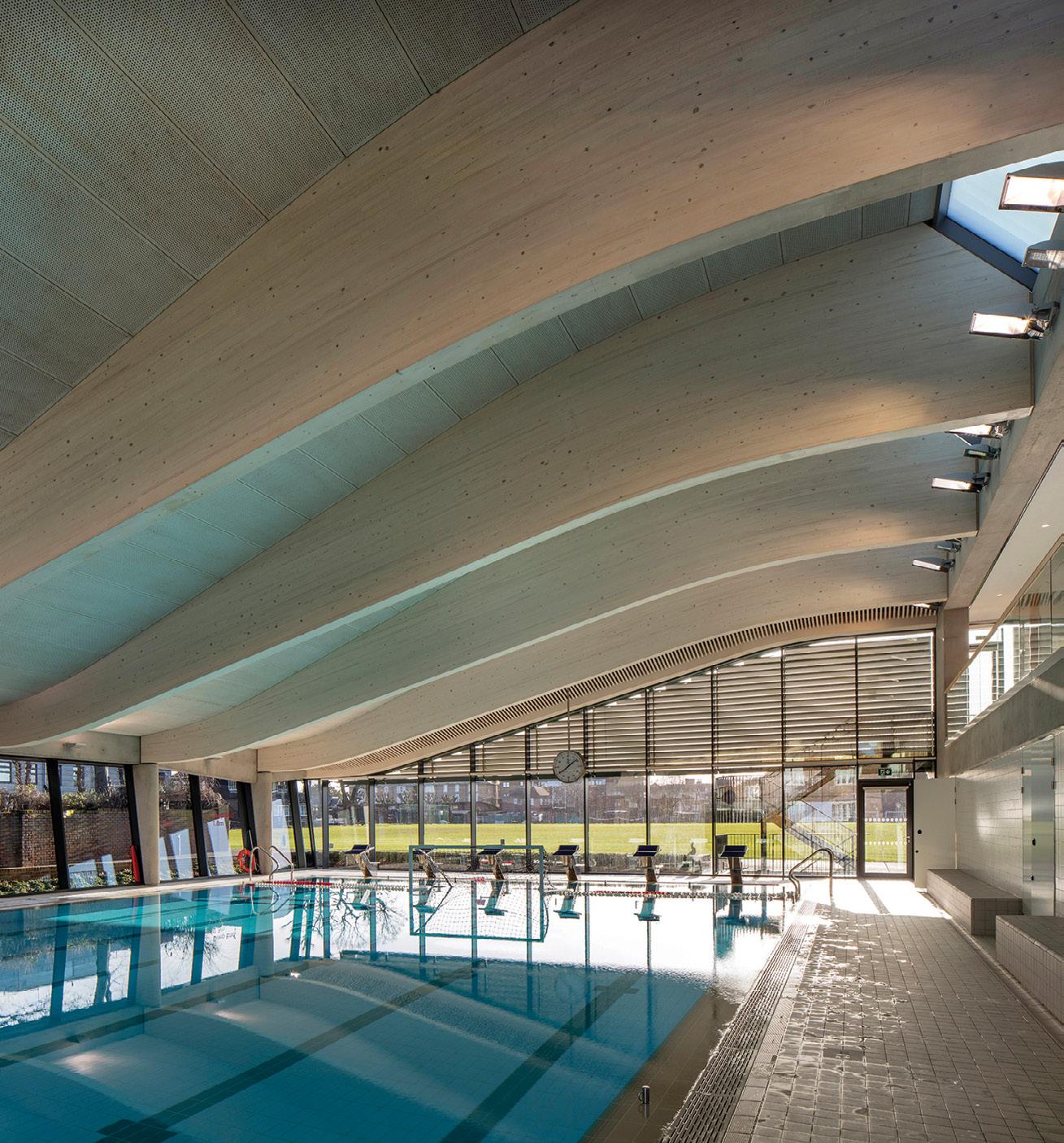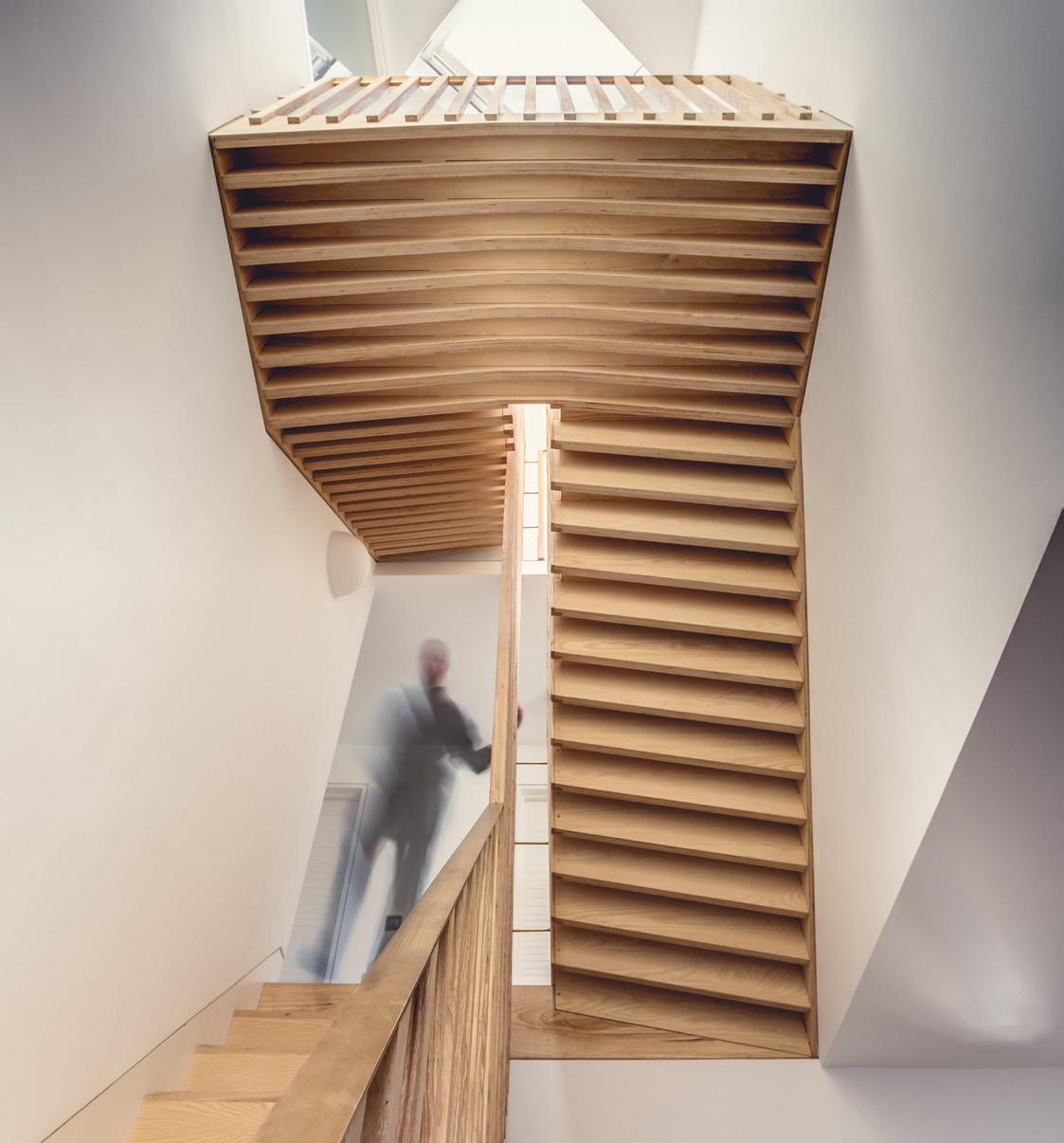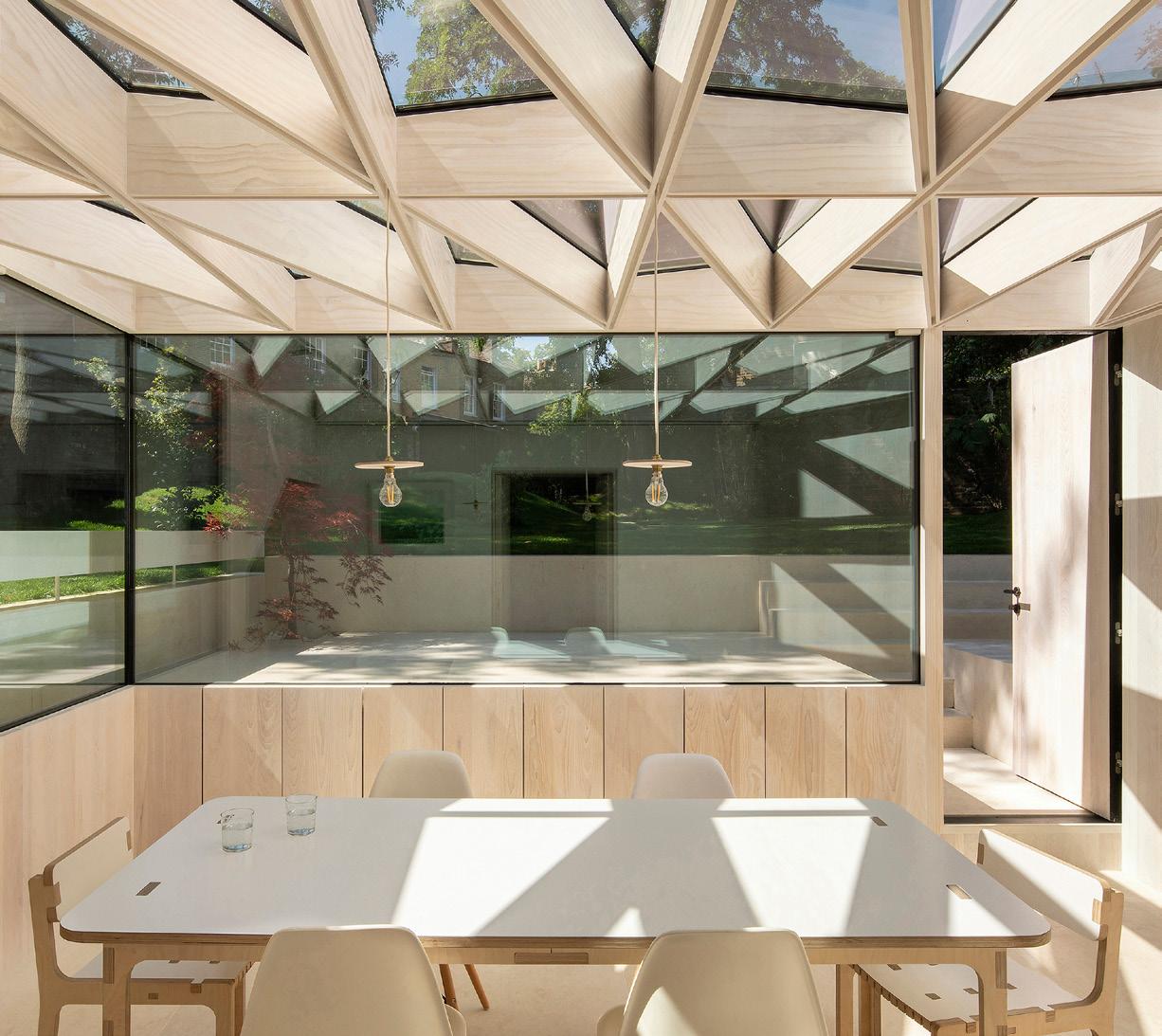
6 minute read
Showcasing Timber at its Finest
The winners of the annual Wood Awards were recently announced with the judges selecting six structures as the best of British architecture and design using timber for 2020.
stablished in 1971, the Wood E Awards has long been the UK’s premier competition for excellence in wood design and aims to encourage and promote outstanding timber design, craftsmanship and installation. This year’s Wood Awards has been one of the few design competitions to go ahead despite Covid-19. The independent panel of judges always visits all the shortlisted projects in person, making this a uniquely rigorous competition. This year, the usual judging process had to be adapted, but the competition persevered with the judges still managing to see each project.
THE RYE APARTMENTS

FRINDSBURY MANOR BARN

Gold Award & Private Winner
This development of ten sustainable apartments sits on a prominent corner site. A mix of one, two, and three-bedroom units are set in two blocks that respond independently to the changing scale across the site. The user’s quality of life is at the heart of the design. The project was driven by two key considerations: how to resist standardised or default positions within housing design, and how to minimise the materials, embodied carbon and cost. Cross laminated timber (CLT) was used for the superstructure and all the internal walls and staircases. The CLT is exposed throughout, creating large, light-filled spaces and a comforting atmosphere. These volumes are detailed with white-washed ash floors. Delicate spruce strips form dropped ceilings in the hallways and bathrooms. The Gold Award is given to the winner of winners with Judge Jim Greaves saying: “Tikari Location: London Architect: Tikari Works Works have taken a gamble and Structural engineer: Webb Yates done something very unusual and Timber supplier: Stora Enso it’s paid off, the apartments are very CLT subcontractor: Eurban popular.” 3-layer board: Binderholz Species: Austrian spruce
Commercial & Leisure
The Barn is Grade 1 listed medieval barn, originally built in 1403, was damaged by fire in 2003. At 210 feet long it is the longest barn in the UK. A third of the barn was re-built in locally sourced green oak. Large quantities of curved timber were selected for braces and tie beams. In total, 1400 f3 of oak was used. Extensive stone repairs were also needed. 95,000 Kent peg tiles were used to re-tile the old and new sections of the barn. The project was based on the fundamental principles of conservation: ‘maintain as much of the historic fabric as possible whist ensuring the building has a viable future use’. The barn and Location: Rochester its surrounding areas are steeped in Architect & client: The Heritage Design & Development Team Ltd history and it remains fundamental Structural engineer: The Morton to the local community. The judges Partnership admired the attention to detail and Main contractor, joinery & timber supplier: Dolmen Conservation Ltd scale of the conservation project. Species: British oak
SWIMMING POOL HALL AT KING’S COLLEGE WIMBLEDON
Education & Public Sector
The Swimming Pool Hall is one of three linked pavilions comprising a new sports centre for the school. The building’s design has strong visual connections between indoors and outdoors to encourage physical activity among students whilst seamlessly connecting the old facilities. The form of the roof evokes a dynamic sense of movement in water. From outside, it sweeps down to respect the boundary with a Grade 2* listed building. Internally, it sweeps up to accommodate a viewing gallery. Curved glulam beams support cross laminated timber (CLT) roof panels with integral timber acoustic linings. The roof’s geometry and pale stained finish reflect natural top-light and artificial uplighters, eliminating the need for any light fittings above the pool. The flush pool edge and glazing on three sides allow views to the outside. Judge Kirsten Haggart said: “The different timber elements all have the same white-washed Location: Wimbledon tone and co-ordinate Architect: David Morley Architects perfectly with the Client: King’s College Wimbledon reinforced concrete Structural engineer: Price & Myers Main contractor: Knight Harwoodcolumns, creating a Timber contractor: B&K Structures beautiful place which Joinery: Suffolk and Essex Joinery Ltd has an intimacy that Timber supplier: Metsa Group Ltd most pools lack.” Species: spruce, pine, fir, larch (European)

BROCKERIDGE STAIR

Interiors
This prototype staircase is part of a UK government funded R&D project to enable digital fabrication directly from BIM modelling environments. The stair rises three floors and is cantilevered from flush mounted stringers. The parts were CNC machined and assembled onsite using standard tools. The new platform developed during research allows designs to be defined parametrically, enabling the user to configure bespoke objects to specific requirements. Parameters such as height, width, depth and material thickness can be user controlled. Digital manufacturing is enabled directly from CAD or BIM software via the platform which enables faster fabrication, better pricing information and reduces errors and waste. Items can be locally fabricated through a distributed manufacturing network model open to any CNC Location: Bristol enabled workshop. The process Staircase & joinery design: Future Joinery Systems Ltd greatly improves construction Architect: CaSA Architects efficiency, supports COVID-19 Structural engineer: Mann Williams social distancing restrictions, Joinery: Silverthorne Joinery & Carpentry increases the type and complexity Digital fabrication: FabLab Cardiff, of work undertaken by smaller Cardiff Metropolitan University’s School site-based joiners and keeps the of Art & Design Timber supplier: Hanson Plywood Limitedlabour pool local. Species: ash, birch
NATIONAL AUTOMOTIVE INNOVATION CENTRE
Structural Award
The National Automotive Innovation Centre is the largest research and development centre of its kind in Europe. It can hold 1,000 staff and students working across design, engineering and research. Timber was chosen for its warm, natural feel within the industrial setting and its wellness and low carbon properties. The walls were assembled using a pioneering system of prefabricated, self-spanning timber and cross laminated timber (CLT) mega-panels that could be erected quickly. As one of the largest timber roofs in the world, the glulam CLT lattice structure unifies the many activities housed beneath a single umbrella. Primary and secondary joists are arranged on a diagrid, spanning onto supporting beams on a 15m grid. Each bay is slightly pitched above to create a nominal fall for the roof, tapered internally within each bay. The undulating soffit profile draws users through the space. Judge Nathan Wheatley said: “We are looking for a scheme that has Location: Coventry challenged the engineer, Architect: Cullinan Studio Client: University of Warwick where the concept has Structural engineer: ARUP been delivered in spite of Main contractor: Balfour Beatty that challenge and where Joinery: B&K Structures Quantity surveyor, cost consultant & project the resultant structure is in manager: Rider Levitt Bucknall some way integral to the Timber engineer: engenuiti success (and architecture) Timber supplier: Rubner Holzbau Gmbh, Ober-Grafendorf, Binderholz GmbH of the building.” Species: CLT, spruce glulam (European)

WOODEN ROOF

Small Project
This conservatory, built for an existing Grade 2 listed house, sits in a north-facing garden. The roof profile had to be pitched shallow to ensure that it sits below the existing adjacent boundary wall shared with the neighbour. The roof also needed to be well-drained. One solid piece of wood, enclosed by four seasons glazing units, forms the entire structure and acts the building’s envelope, structure, insulation and cladding. The diagrid frame is a combination of falls that are either short and steep or long and shallow. The pieces were all CNC fabricated and were light enough to be assembled manually onsite. The beam cross junctions were fixed without any glue or mechanical fixings. Each wood section is wide and deep which helps to emphasise natural light and cast shadows throughout the space. The judges were Location: London impressed by the light and Architect: Tsuruta Architects Structural engineer: Webb Yates airy garden room and were Main contractor: JK London Construction particularly interested in the Joinery: Pracownia Wystroju Wnetrz process of design through to Art Deco -R Timber supplier: Arnold Laver construction. Species: Accoya (New Zealand), ash (Canada)







